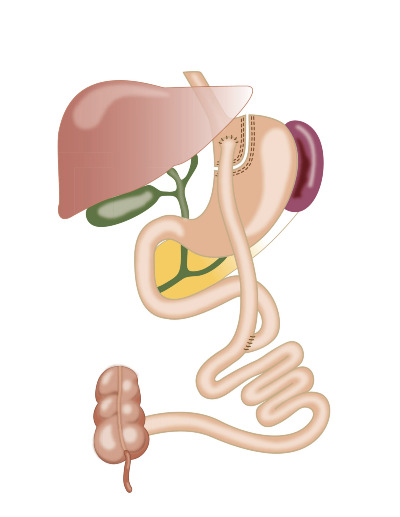



Roux-en-Y gastric bypass is the most common weight loss procedure performed in the United States annually. Once done via traditional open surgery, advances in minimally invasive surgical techniques now allow most surgeries to be performed laparoscopically with 5 to 6 small incisions.
Surgical Diagram of the Laparoscopic Roux-en-Y Gastric Bypass A new small stomach pouch, holding between 2/3 and 1 ounce of liquid is created by dividing the top part of the stomach. In order to absorb and digest food, your small intestine is divided a portion of it brought up to the new stomach pouch, "bypassing the big portion of your stomach". The other end of the small intestine is reconnected to another portion of small intestine further downstream to allow mixing and drainage of stomach acid, bile and digestive enzymes. Surgery typically lasts 2 hours and the average hospital stay is between 2 to 3 days. Patient's lose weight because their new small stomach doesn't stretch when eating food and people feel full and satisfied with very small meals. Also, because the majority of the stomach is bypassed, many patients experience a significant decrease in the size of their hunger also leading to eating less. The average patient will lose 15 to 30 lbs during the first post-operative month, followed by 10 to 15 lbs a month until they achieve their goal weight. By the end of the first 12 to 18 months after surgery, most patient have lost 75% of their excess weight.
All surgery comes with risk. The Roux-en-Y gastric bypass is a standard and safe operation for weight loss but does come with its own set of risks.
Want to learn more? Please contact us and come to one of our free seminars. http://www.pbsmg.com/procedure/step.asp |





